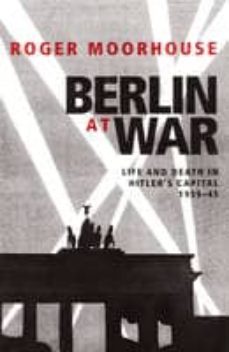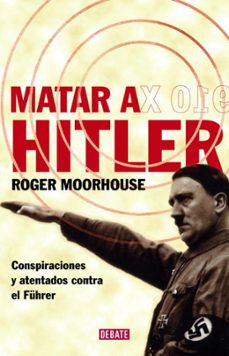Imprescindibles
Ficción
No Ficción
Ciencias y tecnología Biología Ciencias Ciencias naturales Divulgación científica Informática Ingeniería Matemáticas Medicina Salud y dietas Filología Biblioteconomía Estudios filológicos Estudios lingüísticos Estudios literarios Historia y crítica de la Literatura
Humanidades Autoayuda y espiritualidad Ciencias humanas Derecho Economía y Empresa Psicología y Pedagogía Filosofía Sociología Historia Arqueología Biografías Historia de España Historia Universal Historia por países
Infantil
Juvenil
#Jóvenes lectores Narrativa juvenil Clásicos adaptados Libros Wattpad Libros Booktok Libros de influencers Libros de Youtubers Libros Spicy Juveniles Libros LGTBIQ+ Temas sociales Libros ciencia ficción Libros de acción y aventura Cómic y manga juvenil Cómic juvenil Manga Shonen Manga Shojo Autores destacados Jennifer L. Armentrout Eloy Moreno Nerea Llanes Hannah Nicole Maehrer
Libros de fantasía Cozy Fantasy Dark academia Hadas y Fae Romantasy Royal Fantasy Urban Fantasy Vampiros y hombres lobo Otros Misterio y terror Cozy mistery Policiaca Spooky Terror Thriller y suspense Otros
Libros románticos y de amor Dark Romance Clean Romance Cowboy Romance Mafia y amor Romance dramatico Romcom libros Sport Romance Otros Clichés Enemies to Lovers Friends to Lovers Hermanastros Slow Burn Fake Dating Triángulo amoroso
Cómic y manga
Novela gráfica Novela gráfica americana Novela gráfica europea Novela gráfica de otros países Personajes, series y sagas Series y sagas Star Wars Superhéroes Cómics DC Cómics Marvel Cómics otros superhéroes Cómics Valiant
eBooks
Literatura Contemporánea Narrativa fantástica Novela de ciencia ficción Novela de terror Novela histórica Novela negra Novela romántica y erótica Juvenil Más de 13 años Más de 15 años Infantil eBooks infantiles
Humanidades Autoayuda y espiritualidad Ciencias humanas Economía y Empresa Psicología y Pedagogía Filosofía Historia Historia de España Historia Universal Arte Cine Música Historia del arte
Ciencia y tecnología Ciencias naturales Divulgación científica Medicina Salud y dietas Filología Estudios lingüísticos Estudios literarios Historia y crítica de la Literatura Estilo de vida Cocina Guías de viaje Ocio y deportes
Roger Moorhouse
Recibe novedades de ROGER MOORHOUSE directamente en tu email
Filtros
Del 1 al 3 de 3
JONATHAN CAPE (RANDOM) 9780224080712
Berlin was the nerve-centre of Hitler's Germany. It was the backdrop for the most lavish of Nazi ceremonies, the venue for Albert Speer's grandiose plans to forge a new 'world metropolis', and the scene of the final climactic battle to defeat Nazism. Berlin was the stage upon which the rise and fall of the Third Reich was most visibly played out. Yet while our understanding of the Holocaust is well developed, we know little about the wider challenges posed to the German people by living under a dictatorship in wartime, the compromises demanded and the hardships endured. As a result our understanding of everyday life in Nazi Germany is profoundly imbalanced: we know in intimate detail how a minority died under Nazism, but we understand precious little about how the majority lived. In this vivid and important study, Roger Moorhouse seeks to portray the German experience of the Second World War, not through an examination of grand politics, but rather from the viewpoint of the capital's streets and homes - a 'Berlin-eye view' that makes use of published and unpublished memoirs, diaries and interviews. As well as giving a flavour of everyday life in the German capital, "Berlin at War" also raises issues about consent and dissent, morality and authority, which go to the heart of the experience of war and dictatorship. Above all, it charts the violent humbling of a once-proud metropolis - the fear, the cruelty, the petty heroism and the individual tragedy.
Ver más
Tapa dura
DEBATE 9788483067543
La historia de los planes para matar a Hitler durante la II Guerra Mundial. El plan Stauffenberg, el atentado contra Hitler preparado por el movimiento de resistencia alemán el 20 de julio de 1944, es muy conocido. Sin embargo, se trata solo de uno mas en una larga serie de intentos similares. Matar a Hitler cuenta el sorprendentemente alto numero de intentos de asesinar a Adolf Hitler. Alemanes, sovieticos, polacos y britanicos, todos concibieron planes para matar al Fuhrer. Pistoleros solitarios, oficiales alemanes desafectos al regimen y la resistencia clandestina polaca, el NKVD sovietico y el SOE britanico fueron participes. Los metodos propuestos iban desde bombas, venenos o francotiradores hasta infiltrar las SS, o incluso mandar a Rudolf Hess de vuelta a Alemania hipnotizado. Muchos de los planes nunca salieron de los comites que los gestaron, algunos se llevaron a cabo. Todos fracasaron. Junto a la dramatica y desconocida historia de los numerosos atentados contra Hitler, este libro presenta una fascinante investigacion sobre varias cuestiones mas amplias, como los complejos motivos de la resistencia alemana, los peculiares escrupulos britanicos y la eficiencia del aparato de seguridad nazi. Basado en memorias y material o
Ver más
Tapa dura
Del 1 al 3 de 3


























